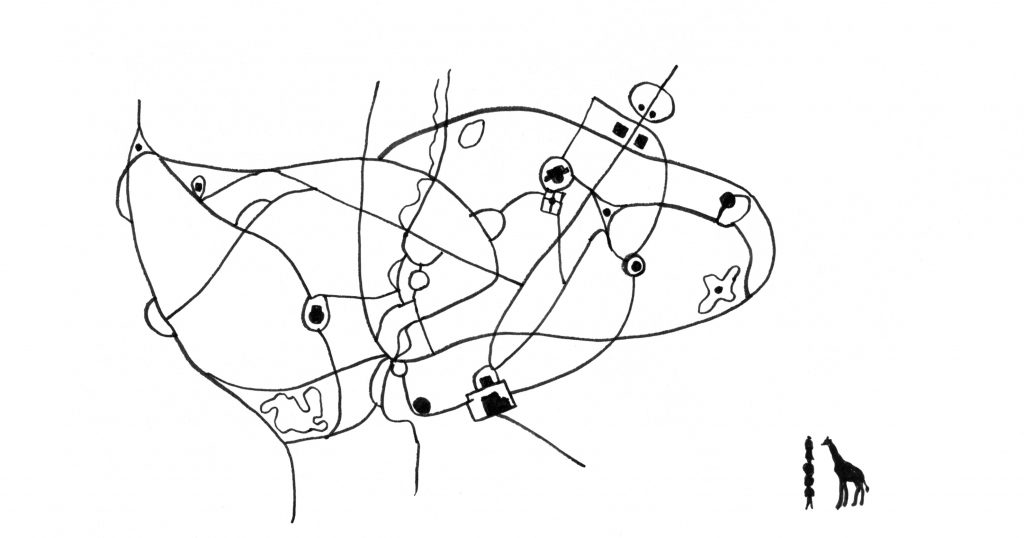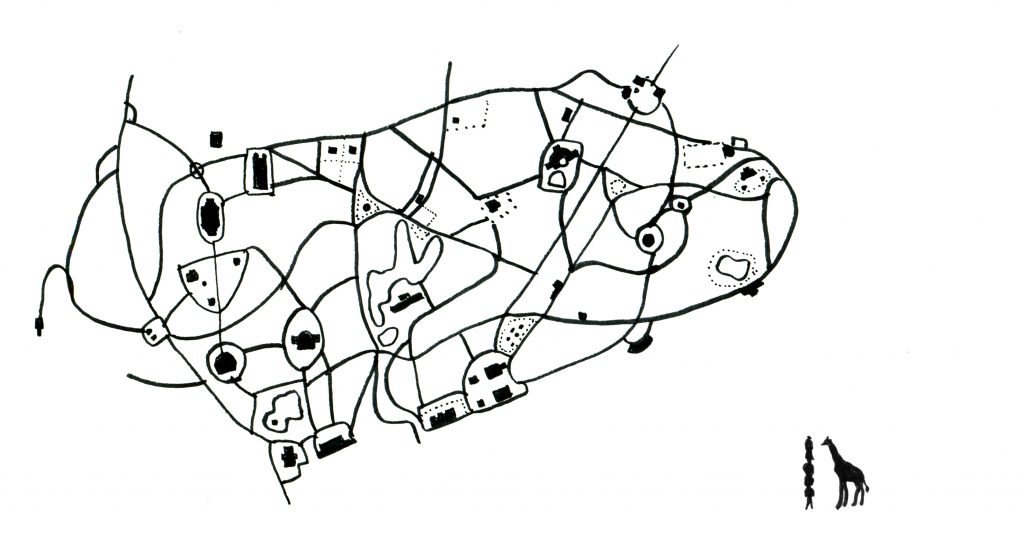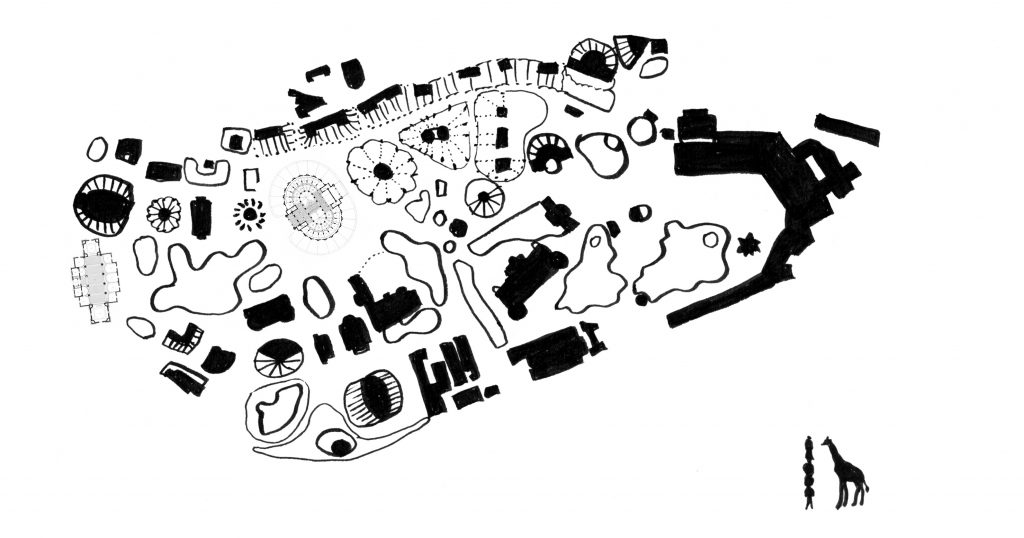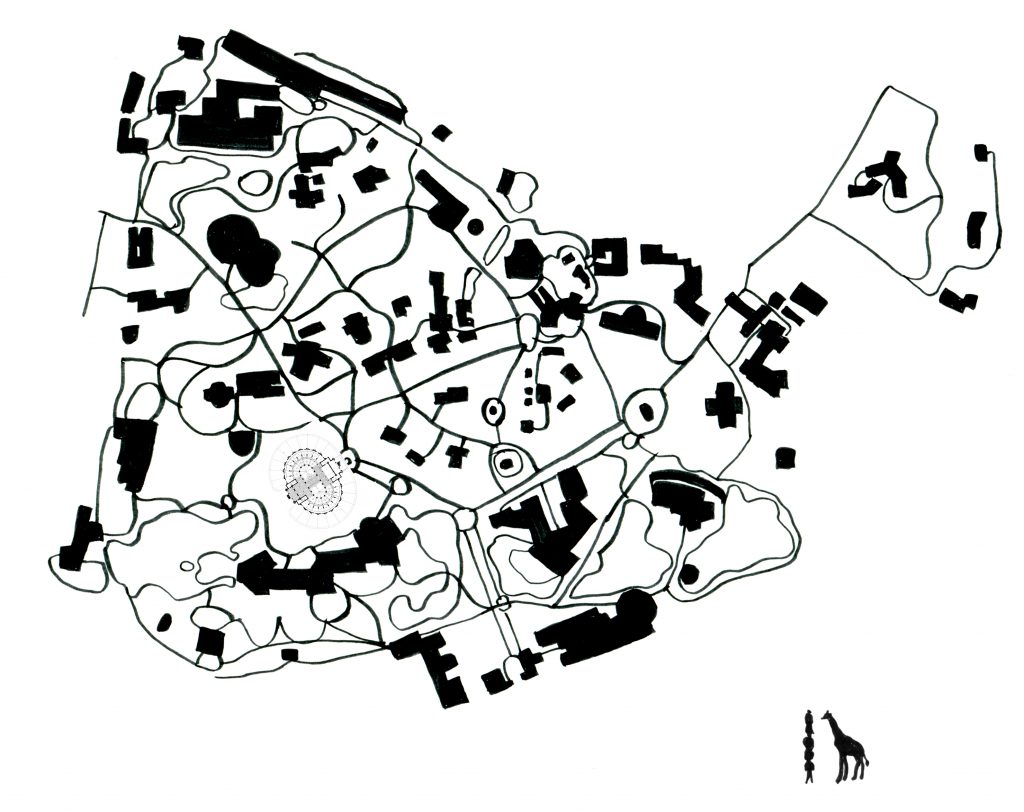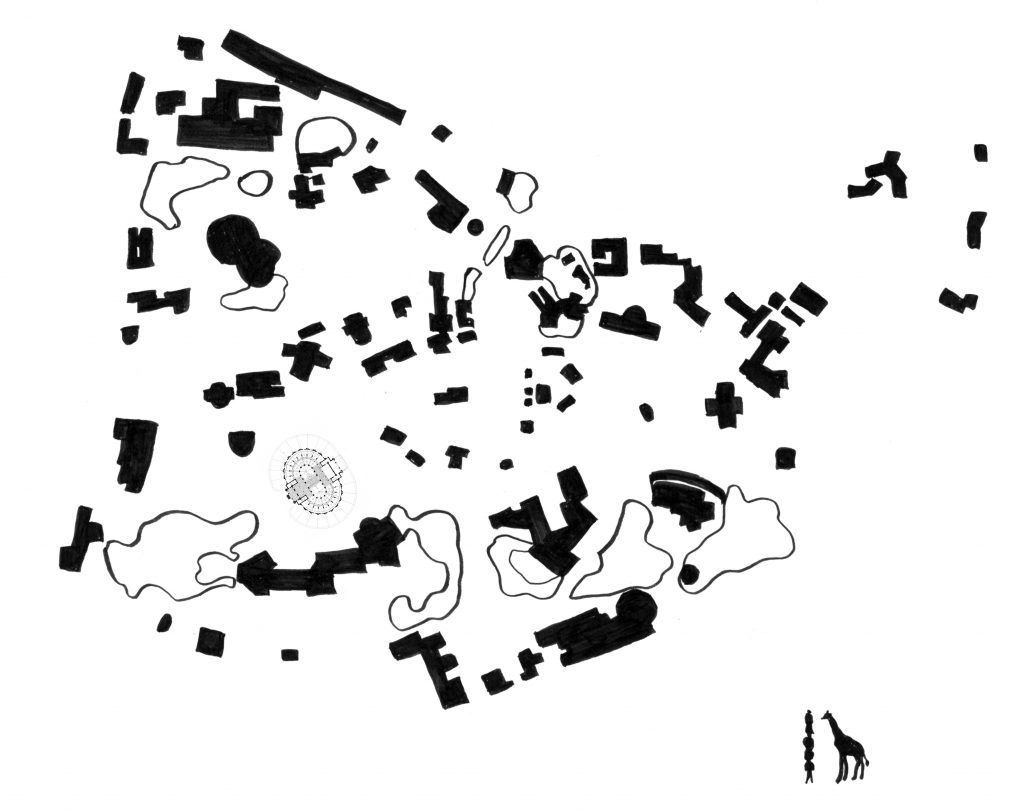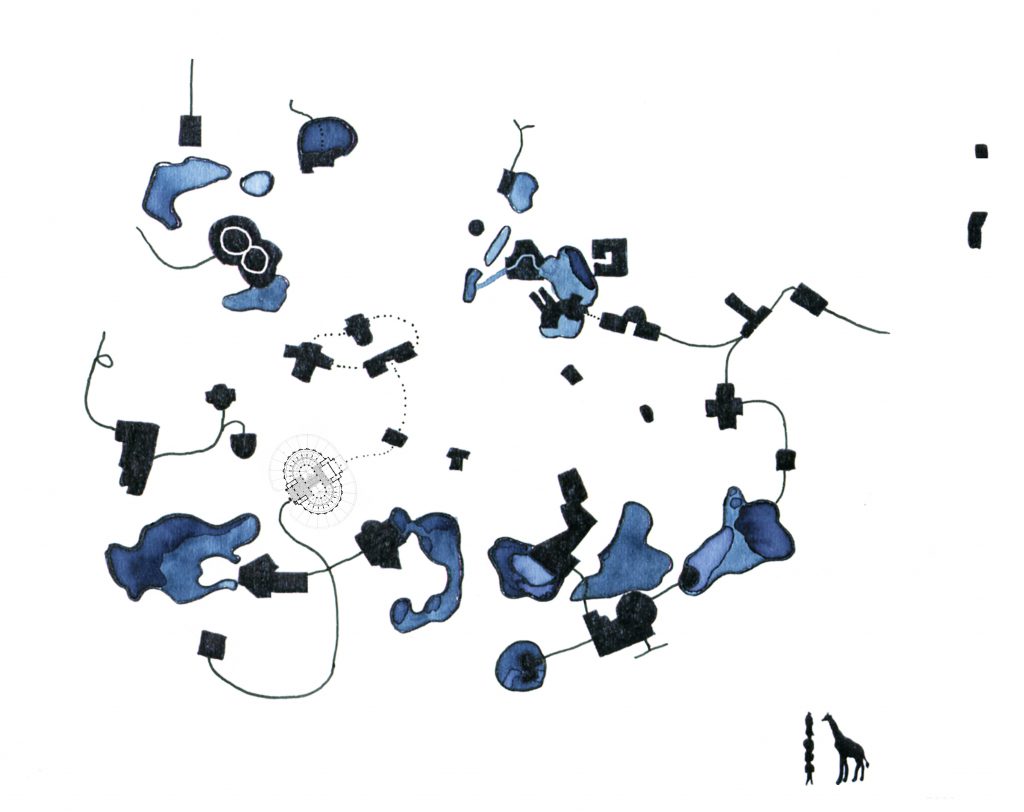August 1, 2019
The zoo as an important indicator, reflecting shifting cultural understandings and relations between humans and other animals. Mapping the zoo from its origin to the future:
From a leafy woody private pheasantry owned by a Pruissian King to a public zooilogical zoo in the space and time of Alexander von Humboldt. From a scientific and cultivated zooilogical garden into a territory symbolic of national identity and colonial conquest. From a systematically ordered exotic animal collection displayed in animal palaces hosting emperor encounters, to a blasted war scene fortified with a zoo flak tower. From 4000 animals to 91 animals. From zooilogical garden in East Berlin to Tierpark in West Berlin. From a post-war zoo under construction to the most visited zoo in Europe with public darlings like Knut and successful breeding and protection programs.
From a theme park where animal species live in man-made habitats and being viewed through man-made perspectives to a more mutual and democratic place for individuals. Where infrastructure is not a closure of territory, but space to internalize. Where giraffes can reside and the spittle bugs have their corner. Where species meet around the water or finding shelter in a palace when it rains or when harvesting fresh leaves hanging above the cycle path. From managing and exposing a collection that emphasizes differences between species to an oasis in the city where the coherence of species and nature as a whole is the sensation and the exotic.
